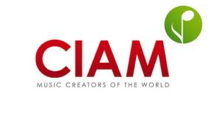This website uses cookies so that we can provide you with the best user experience possible. Cookie information is stored in your browser and performs functions such as recognising you when you return to our website and helping our team to understand which sections of the website you find most interesting and useful.
Business News Digital Labels & Publishers Top Stories
CIAM calls for more money and more transparency
By Chris Cooke | Published on Tuesday 28 October 2014
As well as calling for a more balanced streaming royalty split between rights holders a new CIAM report by Professor Pierre-E Lalonde also makes a number of other proposals about digital licensing, including arguing for streaming firms passing over a higher proportion of their revenue to the music rights owners, and calling for more transparency in the way the labels’ digital deals are done.
Streaming services like Spotify licence music on a revenue share basis, albeit with some advances, guarantees and equity thrown into the mix. It means the amount of money paid over to the labels and publishers, artists and songwriters each month varies depending on how much money has been generated by advertising and subscription sales.
Beyond the initial advances and guarantees, it protects the digital service providers during periods when revenues are down but overall listening is high, but also means that as the revenues of these companies boom – as is currently happening with Spotify – the rights owners enjoy a boom too. Most of the streaming start-ups are paying about 70% of their revenue to the rights owners, which is then split between labels and publishers (the majority going to the former), and is then divvied up based on content usage.
But Lalonde reckons that the DSPs have got themselves too good a deal at 70%, and should actually be paying something nearer to 80% of revenue to the rights owners. The report’s executive summary states: “The current level of revenues paid by music-streaming services to rights holders is between 60% and 70%. This amount undervalues music. With these services poised to become the predominant model for music consumption in the future, the remuneration paid out needs to be re-balanced in favour of rights holders. The current level of remuneration is inadequate given the dependency of these services on music content”.
Of course, the vast majority of the streaming music companies are currently loss-making, so the chances of them agreeing to increase revenue shares in the rights owners’ favour at this time are very low. Indeed, if and when services like Spotify float and get a listing on a stock exchange, investors are likely to put pressure on the DSPs to negotiate their licensing commitments downwards (as is happening with Pandora in the US).
And the way these services are currently developing is also relevant here. As the streaming platforms put more and more effort, and money, into curation services and maybe even original programming, while music will still be at the core of what they offer, these operations will become more and more akin to radio. And the commercial radio sector in the UK, which also has a revenue share license, pays a fraction of what the DSPs are currently committed to. An increase from the current 70%, therefore, seems ambitious.
Indeed, of the big proposals in the CIAM report, the transparency point is likely to gain the most traction, because on that issue the music creator group allies with artist collectives and the management community worldwide. As previously reported, the International Music Managers Forum has become very vocal on this issue of late, calling for an end to the non-disclosure agreements which make it really hard for artists to work out what deals have been done between the labels and the DSPs. Check out a full write-up on the matter in the latest CMU Digest Report.
Either way, all the points raised in Lalonde’s paper are interesting to consider.






